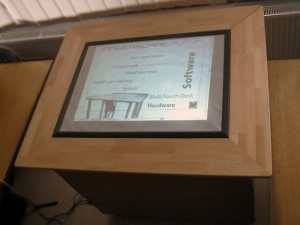Online courses have became very popular recently. One of the most popular platforms that offers online education, Coursera, that offers numerous classes from variety of fields, will reboot their course on HCI.
The course starts on Monday 7th October. This course was already conducted three times.
From the course organisers:
“We’re again offering the apprentice track for those that keep up with lectures and do well on the quizzes, and a studio track for those that also do well on the design assignments. If you received an apprentice or studio certificate in a previous run of the course, you have the option of a studio practicum track that enables you to continue to practice your design skills by completing the design assignments and receiving peer feedback, without needing to retake the quizzes.”
You can find the course at http://hci-class.org/.



